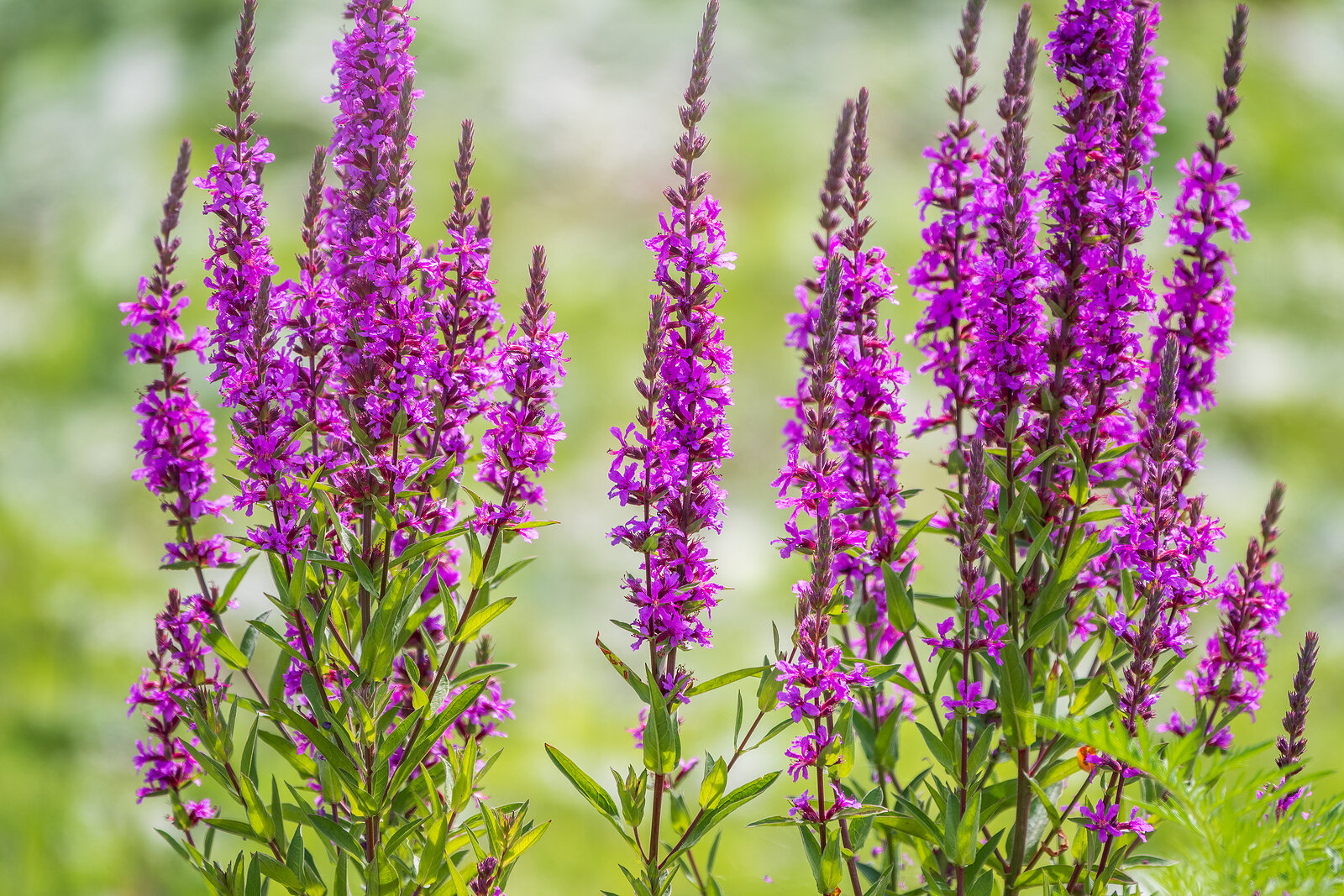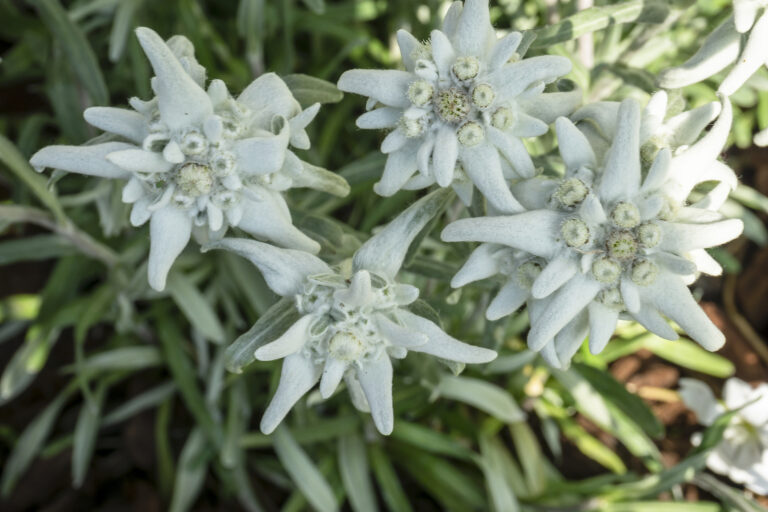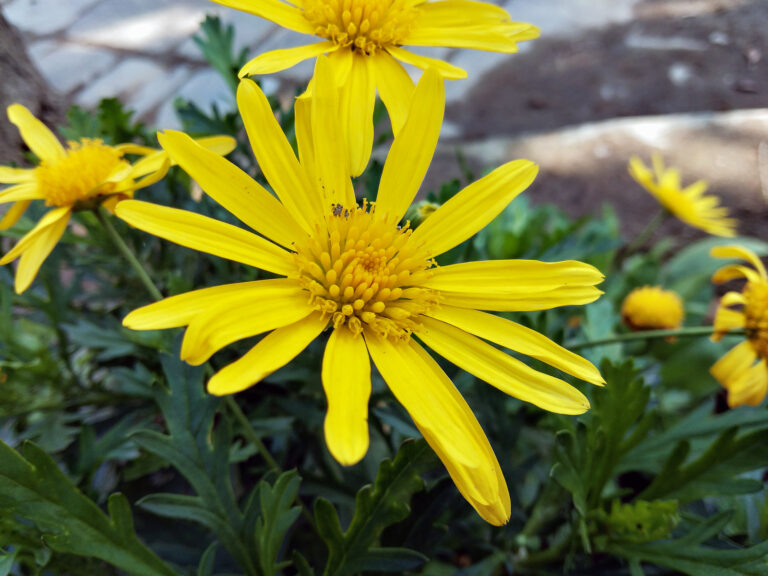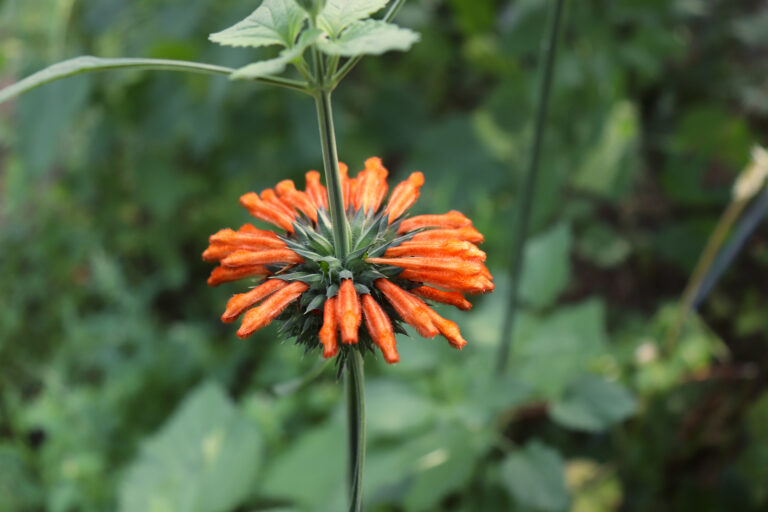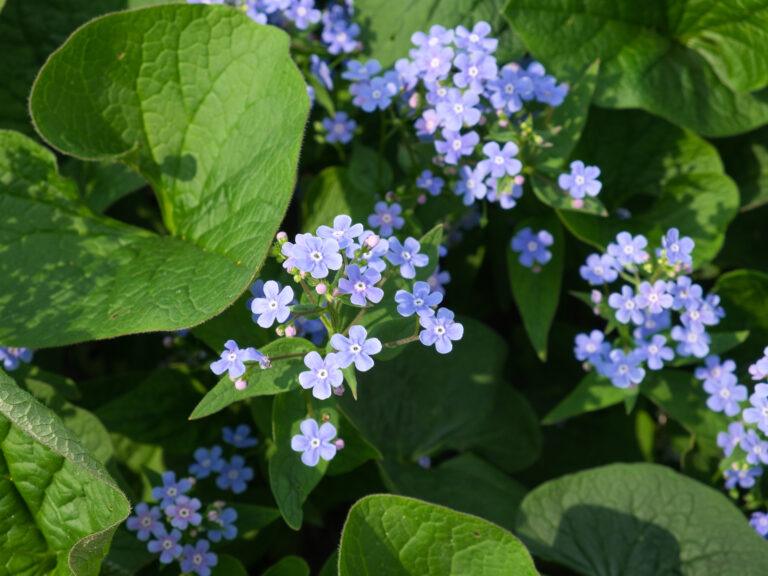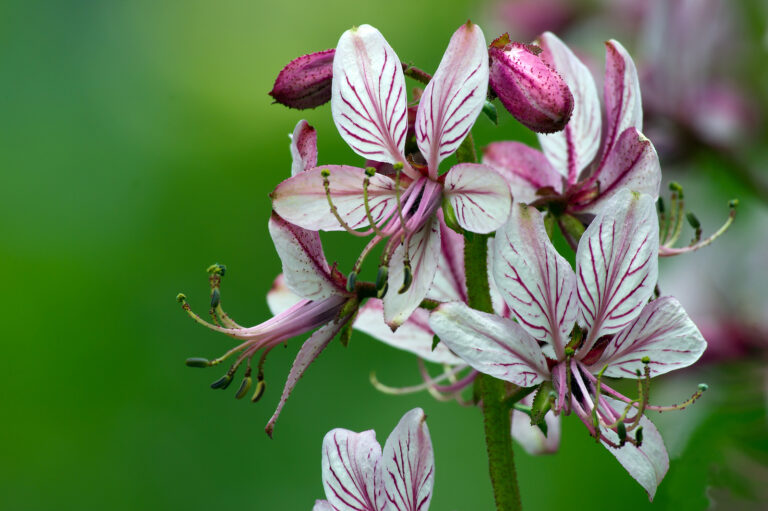How to Grow Lythrum – Loosestrife
Lythrum, commonly known as Loosestrife, is a genus of flowering plants that includes both perennial and annual species. The most well-known species is Lythrum salicaria, or Purple Loosestrife, which is admired for its tall spikes of pink to purple flowers and its long flowering season.
Lythrum is a genus of flowering plants in the family Lythraceae, commonly known as loosestrife. These plants are known for their vibrant, spiky blossoms that can range in color from pink to purple. Overall, Lythrum plants are valued for their beauty and ability to thrive in a variety of environments, but they should be monitored to prevent them from becoming invasive in natural ecosystems.
In some regions, especially in North America, Purple Loosestrife is considered invasive, so care must be taken when selecting and planting it. There are non-invasive cultivars of Lythrum, such as ‘Morden Pink’ or ‘Morden Gleam,’ that can be safer options for gardens.
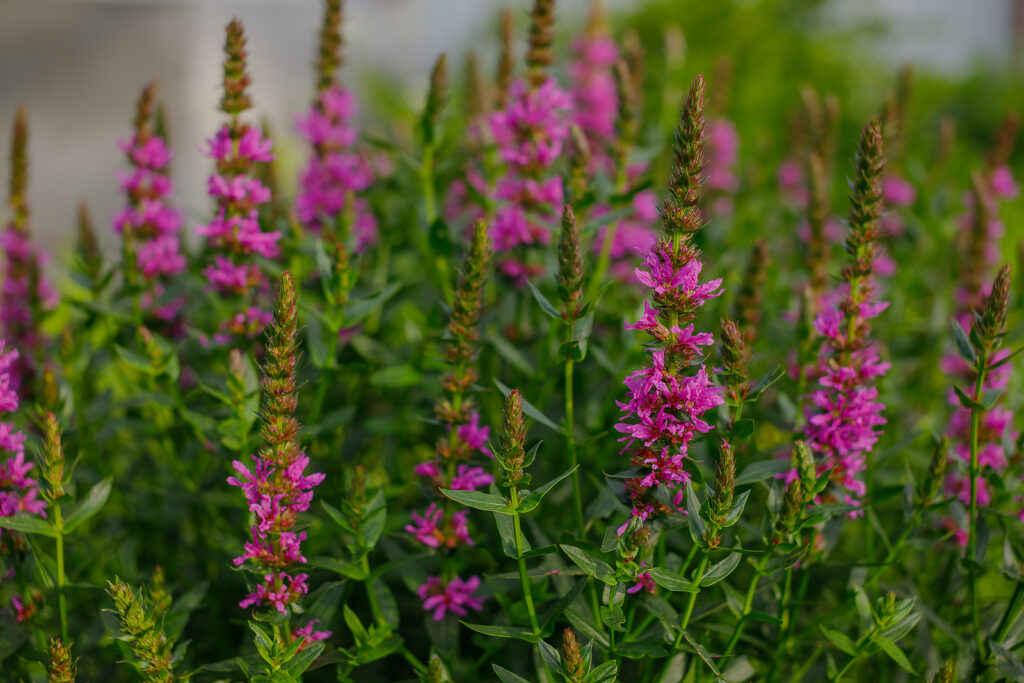
Lytrhrum are native to North America, Europe, and Asia, and are often found growing in wetlands, marshes, and along riverbanks. Lythrum plants have a long blooming period and attract pollinators such as bees, butterflies, and hummingbirds. They are considered invasive in some areas due to their ability to spread rapidly and outcompete native plants.
In traditional herbal medicine, Lythrum plants have been used for their astringent properties and to treat various ailments such as diarrhea, dysentery, and wounds. However, it is important to note that consuming Lythrum plants is not recommended as they can be toxic in large quantities.
Lythrum Characteristics
- Height and Spread: Lythrum plants typically grow between 2 to 4 feet tall, with a spread of around 2 feet, though some varieties can grow taller.
- Flowers: Lythrum produces dense spikes of small, star-shaped flowers in shades of pink, magenta, and purple. The blooms typically appear in summer and last into early fall.
- Foliage: The leaves are lance-shaped and green, forming an attractive background for the flowers.
- Hardiness: Lythrum is hardy in USDA zones 4-9, making it suitable for a wide range of climates. It prefers moist environments and can tolerate both wet and dry conditions.
Overall, Lythrum is a low-maintenance plant that can thrive in a variety of conditions. With proper care and attention, you can enjoy beautiful blooms from this easy-to-grow perennial.
Garden Uses of Lythrum
- Rain Gardens: Due to its love for moist soils, Lythrum is perfect for rain gardens or areas that collect water. It helps absorb excess moisture, making it a good addition to low-lying or waterlogged parts of the garden.
- Borders and Backdrops: Lythrum’s tall, upright habit makes it a great choice for the back of perennial borders, where it can create a colorful vertical accent.
- Pollinator Gardens: The long-lasting flowers of Lythrum attract bees, butterflies, and other pollinators. It’s a great plant for creating a wildlife-friendly garden.
- Water Features: If you have a pond or a water feature, plant Lythrum along the edges to create a natural, wild effect. It thrives in damp soils and can tolerate temporary flooding, making it well-suited to water-side locations.
- Erosion Control: Its robust root system helps stabilize soil, making it a good choice for preventing erosion on slopes or along the banks of rivers and ponds.
- Cut Flowers: The tall, colorful spikes of Lythrum make excellent cut flowers for indoor arrangements.
Lythrum Caution
- Invasiveness: In some areas, particularly North America, Purple Loosestrife (Lythrum salicaria) is classified as invasive due to its ability to spread aggressively and outcompete native plants in wetlands. Be sure to check with local authorities or use non-invasive cultivars to avoid ecological harm.
Recommended Varieties
- Lythrum salicaria ‘Morden Pink’: A non-invasive cultivar with light pink flowers.
- Lythrum salicaria ‘Morden Gleam’: Another non-invasive variety with bright magenta-pink blooms.
Where to Plant Lythrum
- Plant Lythrum in a sunny or partially shaded spot, a spot in your garden that receives at least 6 hours of sunlight per day. with moist, well-drained soil to plant lythrum.
- Plant Lytrhum in well-draining soil. Lythrum prefers moist soil, so consider planting it near a water source or in a low-lying area that collects water naturally.
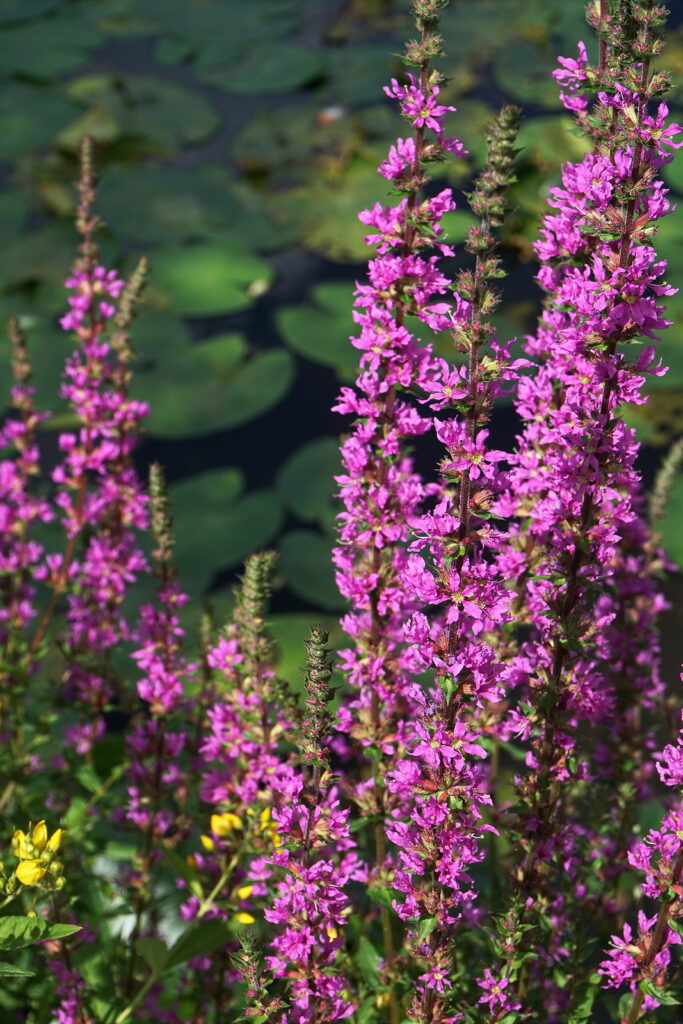
When to Plant Lythrum
- If starting from seeds, plant Lythrum in the spring after the last frost. Scatter the seeds on the soil surface and lightly press them into the soil. Keep the soil consistently moist until the seeds germinate, which can take a few weeks.
- If starting from root cuttings, take cuttings from an established plant in the spring. Plant the cuttings in moist soil and keep them consistently watered until they establish roots.
Planting and Spacing Lythrum
- Lythrum prefers moist, well-draining soil that is rich in organic matter. Amend the soil with compost or aged manure before planting to provide essential nutrients.
- Dig a hole that is slightly larger than the root ball of the plant and place the lythrum in the hole. Backfill with soil and tamp it down gently. Water thoroughly after planting.
- Make sure to space the plants about 12-18 inches apart to allow for proper growth.
How to Water and Feed Lythrum
- Water Lythrum regularly, especially during dry periods. Mulch around the base of the plant to help retain moisture and reduce weed competition.
- Keep the soil consistently moist, especially during dry periods, to promote healthy growth and flowering. Avoid overwatering, as this can lead to root rot.
- Fertilize Lythrum once a year in the spring with a balanced fertilizer to promote healthy growth.
- Lythrum generally does not require fertilization, but you can apply a balanced fertilizer in early spring if the plant appears to be lacking nutrients.
- Add some organic compost to the soil before planting to provide nutrients.
Lythrum Care
- Mulch around the plants: Applying a layer of mulch around the base of the lythrum plants can help retain moisture, suppress weeds, and regulate soil temperature.
- Pruning: Regularly deadhead spent flowers to encourage new growth and prolong the blooming season. Cut back any damaged or overgrown branches in the winter or early spring.
Lythrum Pests and Diseases
- Monitor for pests and diseases, and treat as needed. Lythrum is generally disease and pest-resistant but may occasionally be affected by aphids or powdery mildew.
Lythrum Propagation
- Lythrum, also known as purple loosestrife, can be grown from seeds or root cuttings.
- Over time, lythrum plants may become overcrowded and require dividing to maintain their vigor. Divide the plants in spring or fall, making sure each division has a healthy root system.
- Divide established plants every few years to maintain their vigor and prevent overcrowding.
Lythrum varieties to grow
- In some regions, especially in North America, Purple Loosestrife is considered invasive, so care must be taken when selecting and planting it. There are non-invasive cultivars of Lythrum, such as ‘Morden Pink’ or ‘Morden Gleam,’ that can be safer options for gardens.

